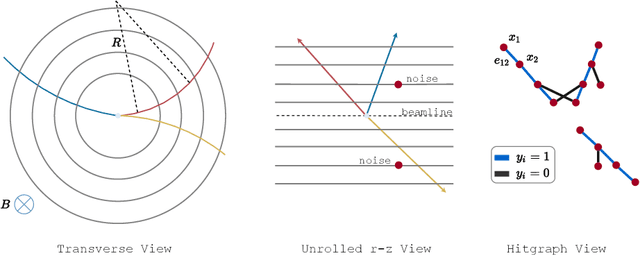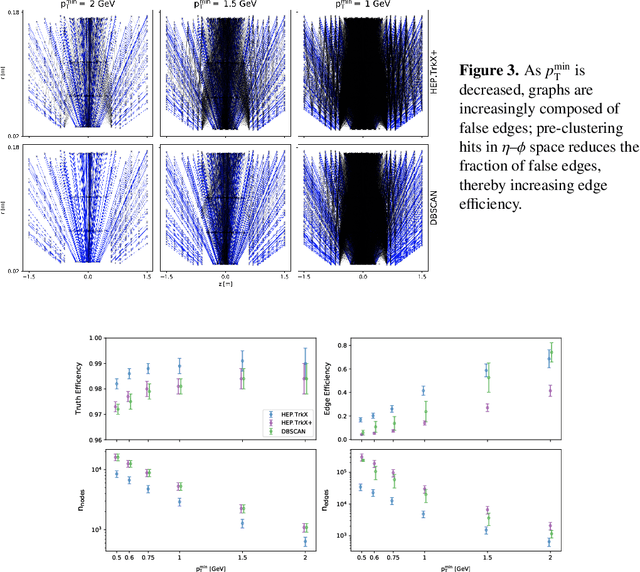Charged particle tracking via edge-classifying interaction networks
Paper and Code
Mar 30, 2021



Recent work has demonstrated that geometric deep learning methods such as graph neural networks (GNNs) are well-suited to address a variety of reconstruction problems in HEP. In particular, tracker events are naturally represented as graphs by identifying hits as nodes and track segments as edges; given a set of hypothesized edges, edge-classifying GNNs predict which correspond to real track segments. In this work, we adapt the physics-motivated interaction network (IN) GNN to the problem of charged-particle tracking in the high-pileup conditions expected at the HL-LHC. We demonstrate the IN's excellent edge-classification accuracy and tracking efficiency through a suite of measurements at each stage of GNN-based tracking: graph construction, edge classification, and track building. The proposed IN architecture is substantially smaller than previously studied GNN tracking architectures, a reduction in size critical for enabling GNN-based tracking in constrained computing environments. Furthermore, the IN is easily expressed as a set of matrix operations, making it a promising candidate for acceleration via heterogeneous computing resources.
 Add to Chrome
Add to Chrome Add to Firefox
Add to Firefox Add to Edge
Add to Edge